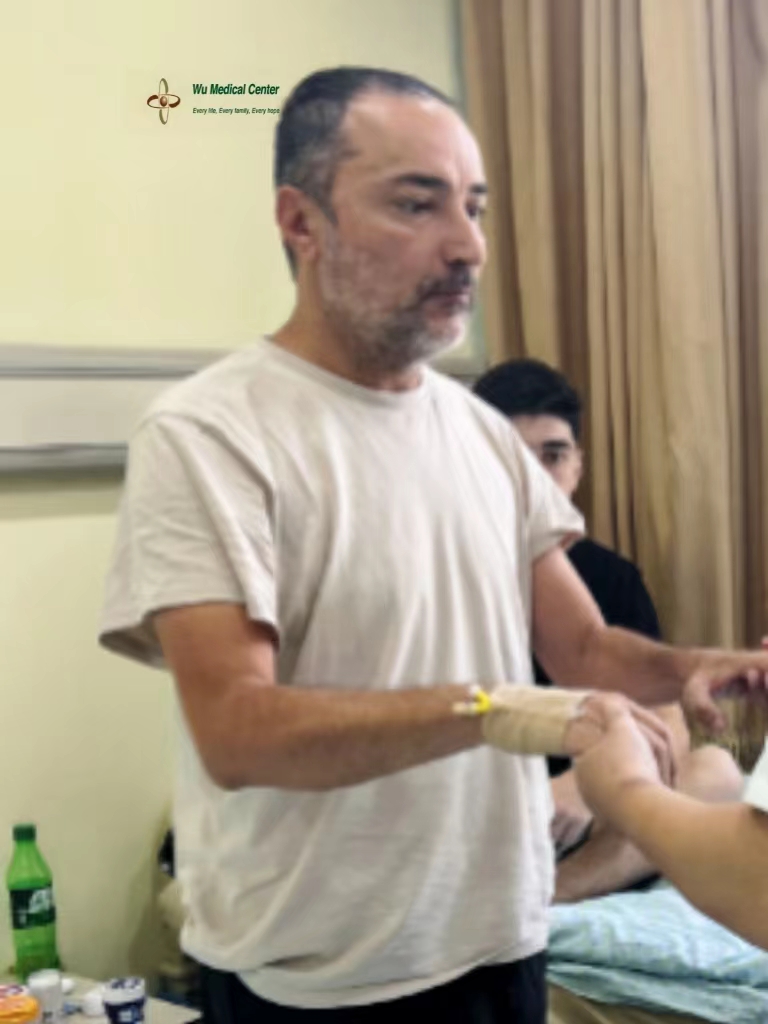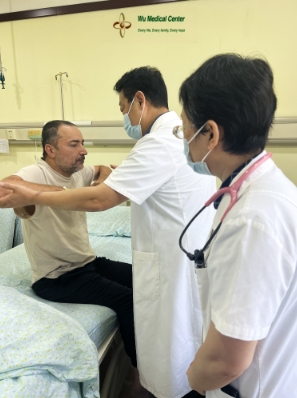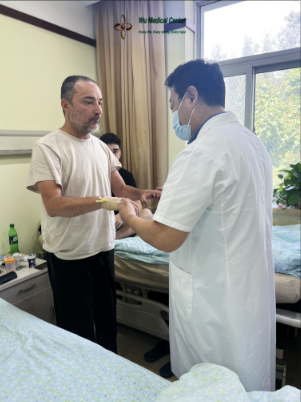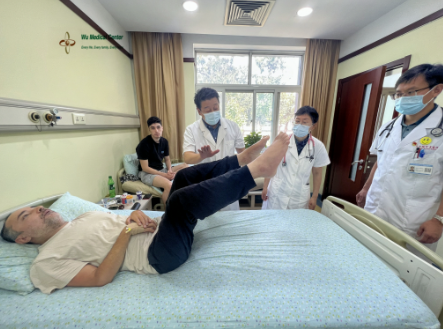Muammer Kabadayi-Amyotrophic lateral sclerosis(ALS)-(Netherlands)
 Patient name: Muammer Kabadayi
Patient name: Muammer Kabadayi
Gender: Male
Age: 69 years old
Nationality: Netherlands
Disease diagnosis: Amyotrophic lateral sclerosis
Before treatment:
The patient found pain in both knee joints during exercise 3 years ago, and then gradually developed finger weakness and difficulty in fine movement of his fingers, with intermetacarpal muscle atrophy and weak distal muscle strength of both lower extremities. He was admitted to hospital with amyotrophic lateral sclerosis. The patient denied a history of chronic diseases and infectious diseases and had no history of drug and food allergies.
Admission for physical examination:
The patient’s pulse 80 beats / min, breathing 20 beats / min, blood pressure 124/70mmHg. His height 176CM, weight 71kg. He had normal development, good nutrition, lips without cyanosis. His chest was symmetrical, his thoracic respiratory mobility was basically normal, the breathing sounds of both lungs were clear, and no dry-wet rales were heard. His heart sound was strong and rhythmic, and there was no obvious murmur in each valvular area of the heart. His abdomen was flat and soft, there was no tenderness and rebound pain, and his liver and spleen were not touched under the ribs. The anterior tibial of both lower limbs showed pitting edema and his dorsalis pedis artery fluctuated well.
Nervous system physical examination:
The patient’s mind was clear, his spirit was good, but his articulation was slightly less clear. The ability of calculation, memory and orientation were all normal. His double pupil equal circle, diameter 3mm, sensitive to light, flexible eye movement, no nystagmus. Bilateral nasolabial sulcus and forehead lines were symmetrical, tongue extension was in the center, tongue muscle atrophied laterally, tongue movement was normal, gills were strong, chewing force was normal, bilateral soft palate was lifted forcefully, uvula was in the center. He could turn his neck and shrug his shoulders forcefully. His proximal muscle strength of both upper limbs was grade 4, the extensor and flexor strength of his left wrist was grade 2, the extensor and flexor strength of his right wrist was grade 2 +, the grip strength of his both hands was grade 2, the interfinger muscle strength of left hand was 2, and the interfinger muscle strength of right hand was 2 +. The proximal muscle strength of his both lower limbs was grade 3, his left foot metatarsal flexion dorsiflexion muscle strength was grade 2, and his right foot metatarsal flexion dorsiflexion muscle strength was grade 1. The muscle tension of his extremities was basically normal. The interosseous muscle and thenar muscle of his both hands were obviously atrophied. Muscle bundle fibrillation could be seen in his all limbs. There was a tendon reflex in the extremities. Bilateral Hoffmann sign was positive and bilateral Babinski sign was negative. The finger nose test of his both hands was OK, the rotation test and opposite finger test were clumsy, and the bilateral calcaneal knee tibia test was not stable and accurate. Meningeal irritation sign was negative.
Treatment process:
The patient was diagnosed as amyotrophic lateral sclerosis (ALS) after his admission. During hospitalization, he was treated with CAST and neural stem cells plus mesenchymal stem cells to repair motor neuropathy, nourish motor nerves, improve internal environment, immunomodulation and rehabilitation training as a comprehensive treatment.
After treatment:
The motor function of the patient was significantly improved, and the muscle strength of his both hands was significantly improved. The extensor and flexor strength of his left wrist was grade 3, the extensor and flexor strength of his right wrist was grade 3, the grip strength of his both hands was grade 3, and the interfinger muscle strength of his both hands was grade 3 +. The leg-lifting strength of his both lower limbs increased, and the dorsiflexion function of his feet was improved, with proximal muscle strength of 4 grades, his left foot metatarsal flexion dorsiflexion muscle strength of 3-grade and his right foot plantar flexion dorsiflexion muscle strength of 2 grades. The sunken edema of his both lower limbs was significantly alleviated. The completion of finger pointing and rotation test was improved. His mental state, energy, physical fitness and sports endurance were all improved obviously.



